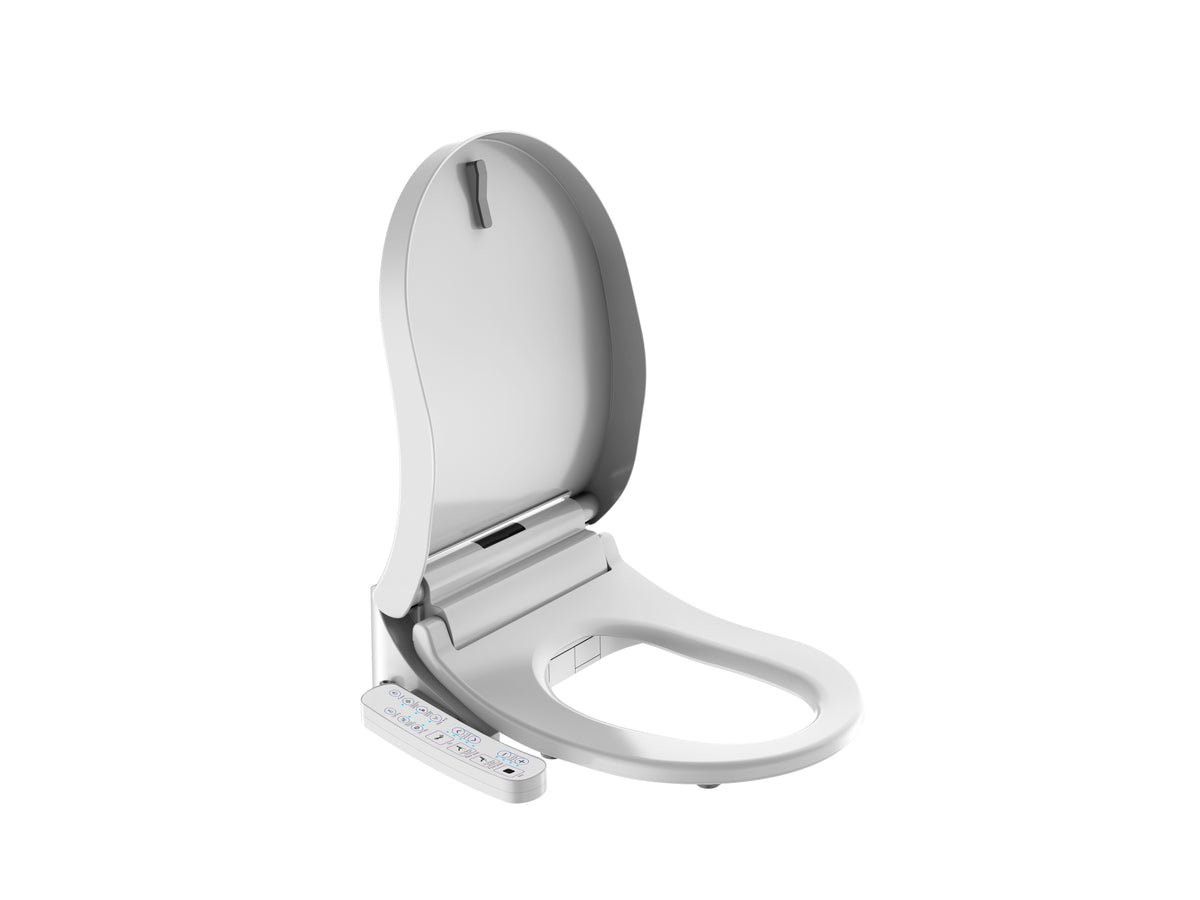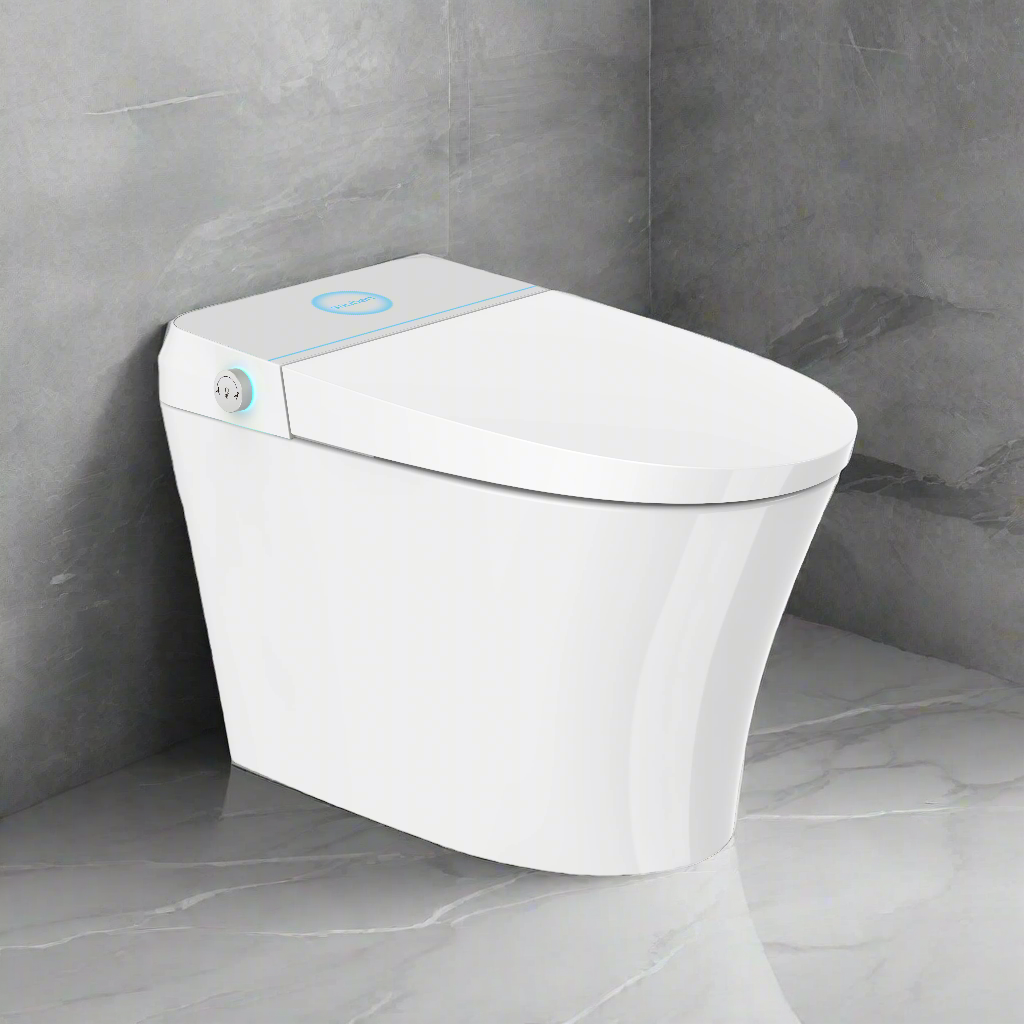The world has developed greatly over the years and brought us improved technology, cultural diversity, and countless other successes. Yet, one thing has stayed consistent all these centuries - human hygiene. Bidets are a type of bathroom fixture used for personal hygiene in many countries worldwide, yet their presence is lacking in both the UK and the US.
In this blog post, we will explore why this is so, discussing potential reasons such as cultural biases and limited availability that may be preventing bidets from gaining more widespread acceptance in those countries.
The history of bidets
Bidets have been around for centuries, but they only truly made their mark in the 1600s when they were introduced to France. Initially known as "lavatory chairs," early bidets were usually large, wooden fixtures used by royalty and those of noble birth. Since then, the design has changed significantly and today most bidets look much more like regular toilets - save for the addition of a hose for water supply. And with the recent emergence of smarter bathroom tech, the humble bidet has gotten an upgrade like never before - from heated seating to nightlights built into the lid! All in all, it's an impressive transformation that testifies to just how important these commodes have become over time.
Bidet use throughout the world
Bidets are a convenient way to maintain good hygiene and have long been popular in many parts of the world. The word itself originates from the French “bidet” which translates from the old French “bider” meaning “to trot”, as horses used to be brought up alongside a washbasin to help clean them. In Europe, bidets can be found in two-thirds of homes while they are nearly non-existent in North America. Asia also has had widespread use of bidet use for centuries, with many modern forms including electronic ones that dispense warm water and air dry you after use.

Bidet use in Europe
One of the most convenient aspects of European bathrooms is bidets, which are prevalent throughout Spain, France and Italy. A bidet is a small basin that sprays water to help cleanse one's intimate areas on top of regular toilet paper use. As a result, Europeans tend to be much more hygienic than other countries in the same general vicinity.
The access to bidets also takes away from some of the messiness typically attributed to using the toilet. Spain, France, and Italy take their bidet culture quite seriously; many people cannot fathom life without them! Additionally, in Spain and Italy in particular, not having a bidet severely lowers the value of a home or hotel room for certain renters or buyers as it is seen as an essential aspect of a proper bathroom experience.
Bidet use in Asia
Using a bidet is commonplace in many parts of Asia. It is believed to be more hygienic than using toilet paper and according to surveys, over 80% of bathrooms in Japan have one installed. Many people across the region view it as a gentler form of cleaning rather than the roughness they perhaps experience with using mere paper alone.
Bidets are also commonly used alongside other cleansing devices such as dedicated washing tools for hands and feet, and water hoses attached to shower heads for general hygiene. Because it is so prevalent throughout Asia, these products have become commonplace items sold in many stores. Today, bidets have created a new kind of culture around them from the East to the West, proving that sometimes an old custom can still spark modern trends.

Bidet use in the UK & US
In the U.S. and U.K., bidet use hasn't yet become widespread, but times are slowly changing; more people than ever before are becoming aware of their benefits, such as improved cleanliness and environmental sustainability. While industry data suggests Americans are starting to take notice, it appears that Brits are leading the charge with bidets increasing in popularity within the home over the past few years.
The simplicity of using a bidet, from a quick spray to maintaining optimal hygiene on a daily basis, makes them attractive for private homeowners and commercial establishments alike. As pressure grows for businesses to reduce their water consumption and water utility bills, bidets have become an increasingly attractive solution – they save time while reducing water usage.
Why don’t more people use bidets in the UK & US?
Even though bidets are commonplace in other parts of the world, they have yet to catch on in the US and UK. There are several possible factors that are at play here. Depending on whom you ask, cultural norms and personal preference could be high up on the list, with many people feeling more comfortable with traditional toilet paper rather than its water-based counterpart. Additionally, the upfront cost associated with purchasing a unit and having it installed means that it is viewed as something of a luxury item in both countries.

Common misconceptions about bidets
Despite the growing popularity of bidets, there are still many misconceptions about them. One prevalent one is that bidets can be difficult and costly to install. In reality, most models are fairly easy to install, even for homeowners with limited plumbing experience.
In fact, several bidet toilet seats now come with intuitive “smart” features such as heated seating and water temperature adjustment.
Another misconception is that bidets require a lot of water to use. Actually, modern bidets are very efficient in their usage of water, typically using around 1/8th of a gallon per minute compared to the up to 4 gallons used by traditional toilets.
A final misconception about bidets is that they are only for a certain type of bathroom. Despite their association with luxury, bidets are suitable for any style of bathroom and can be used in homes of all sizes.
Cultural influence on bidet use
Bidets are being increasingly embraced by people around the world, in large part due to the influence of culture. For centuries, bidet use has been commonplace in many countries, particularly those that span the Mediterranean region. However, Japan has become a major source of global influence when it comes to bidet use, as there is a cultural expectation that citizens keep themselves clean to maintain hygiene. While there is an obvious environmental argument for using bidets as well, it is clear that culture plays a large role in how widespread their adoption is becoming.
How do you use a bidet?
Operating a bidet is quite simple, and the modern designs make it easier than ever before. To start, adjust the temperature and pressure of the water to your preferred settings. Then, straddle the seat for comfortable positioning. Gentle cleansing jets are then activated which allows users to get a refreshing and clean feeling after use. For those afraid of getting wet or unsure of how to use a bidet, most models feature an adjustable wand with a nozzle that extends from under the seat for optimum cleaning. With a few steps, you can be feeling refreshed and clean in no time!

How do you use a bidet toilet seat?
To use a bidet toilet seat, simply sit down on the seat and adjust the nozzle to your desired position. Once you have found the right angle, press the activated button to turn on the warm water stream. Depending on the type of model, you can use one of various water pressure settings that will provide a comfortable yet cleansing shower-like experience. For added convenience, some models feature self-cleaning nozzles and air dry features that automatically shut off after you adjust it back to its original position. Bidet toilet seats offer many benefits such as improved hygiene and comfort, along with a more sustainable form of sanitation.
Different types of bidets
Bidets are an innovative way to clean up after using the bathroom, and there are many types of bidets on the market today. One popular option is a smart toilet seat, which can be installed directly onto your existing toilet and offers numerous features such as adjustable warm water temperatures, heated seats and even an ambient light setting. Another type of bidet is the passé but still popular bum gun, which comes with a handheld shower head that is attached to a hose near the toilet so you can control exactly where and how much pressure you use to clean yourself. While smart toilet seats provide more modern amenities, they both provide effective personal hygiene control.
Bidet FAQs
Are bidets more sanitary than toilet paper?
Toilet paper has been the primary hygiene product used around the world for toilet hygiene, yet bidets provide a greater level of cleanliness. Washlet or toilet seat bidets use a single stream of water at body temperature and pressure to perform a posterior wash after toilet use, which helps to reduce skin irritation and bacterial infections that toilet paper fails to address.
Bidet toilet seats are also more environmentally friendly compared to toilet paper usage since they require no trees, water or bleach to produce or come in contact with faecal particles that often must be flushed down with toilet paper. This can help reduce the negative impacts on our environment due to toilet paper production. Ultimately, bidets are increasingly becoming more sanitary than toilet paper for personal hygiene.
What are Japanese smart toilets?
Japanese smart toilets are the latest advancement in Japanese bathroom technology and have revolutionised the Japanese bathroom experience. These toilets feature state-of-the-art features such as a heated seat, built-in bidet, and cleaning functions. These features offer users luxury and convenience while accommodating their specific needs. Because of this, smart toilets have become a popular trend among Japanese households and businesses alike. With sophisticated design and cutting-edge technology, Japanese smart toilets are redefining what it means to use the restroom.
Are bidets eco-friendly?
Bidets are becoming increasingly popular in today's world due to the practical, environmental and health benefits they offer. Though there is not a lot of data on their level of eco-friendliness, it stands to reason that the less toilet paper used, the lighter the burden on natural resources. By using water instead of toilet paper to clean oneself after using the restroom, bidets can reduce our reliance on trees for making paper and lower wastewater pollution caused by bleach or other chemicals that give toilet paper its white colour.
Though bidets still require energy for electric operations, they are more eco-friendly than using toilet paper. Despite this fact, one cannot deny the positive impact these products have on sustainability-minded individuals wishing to minimize their footprint.
Conclusion
It’s clear that the widespread use of bidets in many countries has its advantages. The lack of popularity in the UK and US likely has to do with a combination of factors: unfamiliarity, lack of space, cost, and more. Even though they may not be as ubiquitous, companies are making strides in introducing new products such as expandable bidet attachments and dual flush toilet-bidet combos that make it more convenient for people to utilise this unique bathroom fixture.
Understanding why people don't use bidets — whether it’s because of unfamiliarity or experience — is essential to tackling the barriers to their wider acceptance. Ultimately, an open mind and learning attitude can only lead to greater awareness about this helpful bathroom tool so that more Americans and Britons can experience all the benefits that come with having access to running water for personal cleaning purposes.
Upgrade your bathroom with a state-of-the-art bidet toilet seat from our British design team, which include a bidet, dryer and remote controls. Find out more about the health benefits of bidets.


